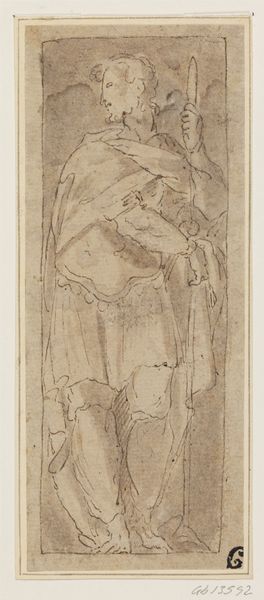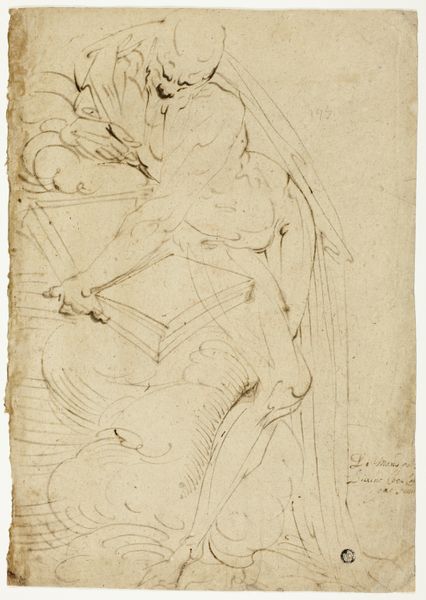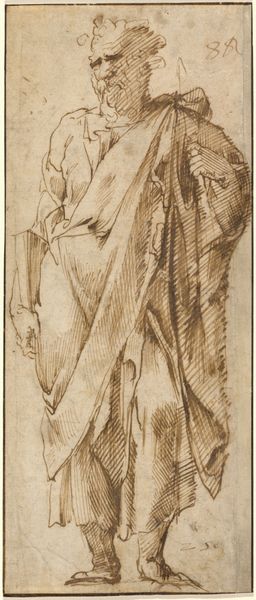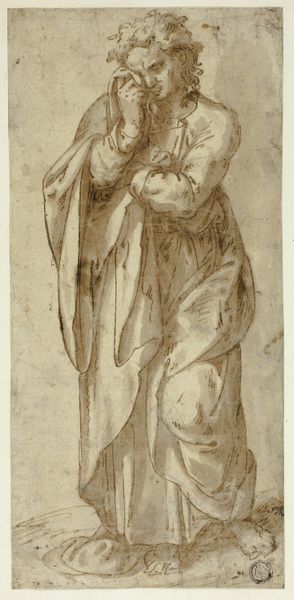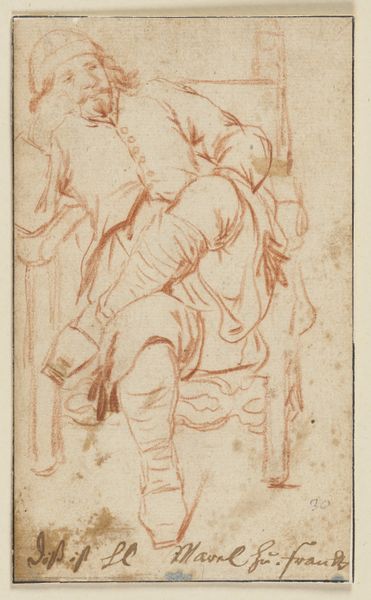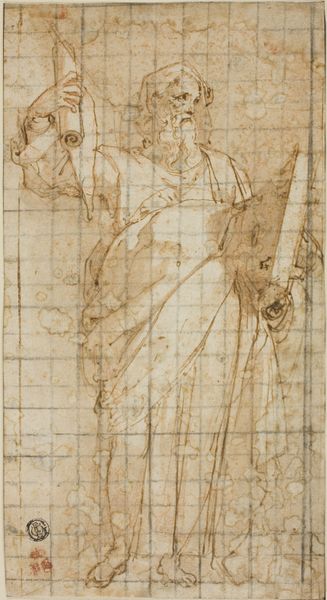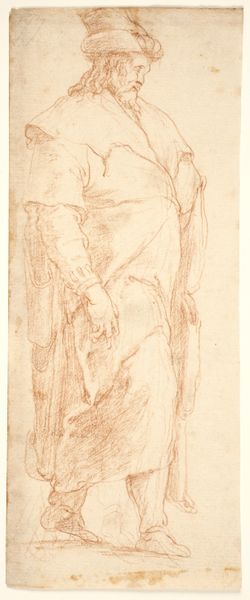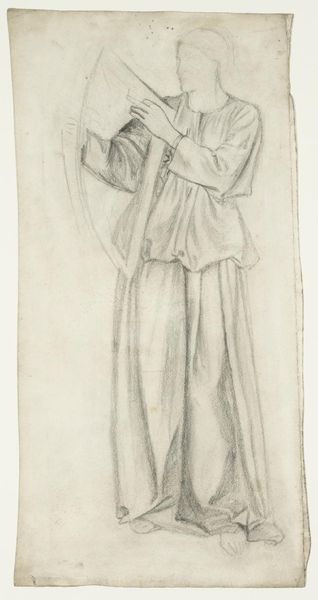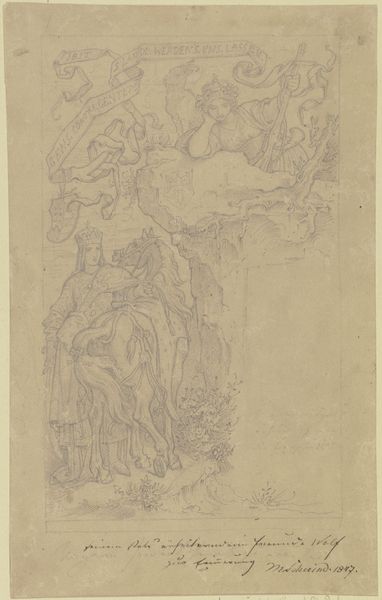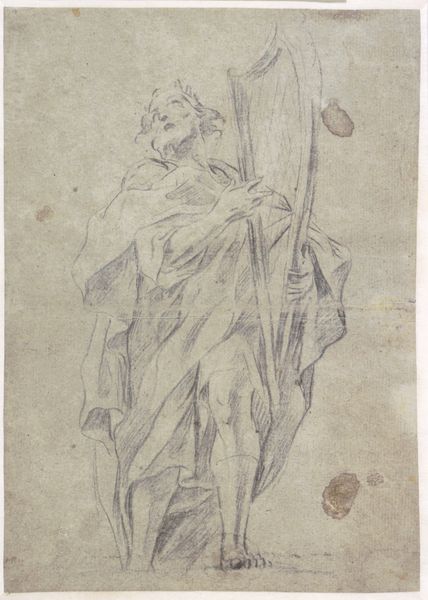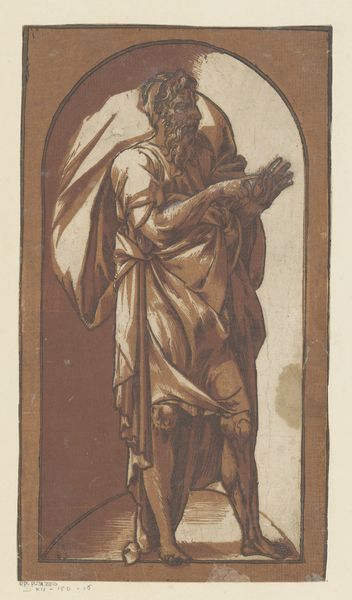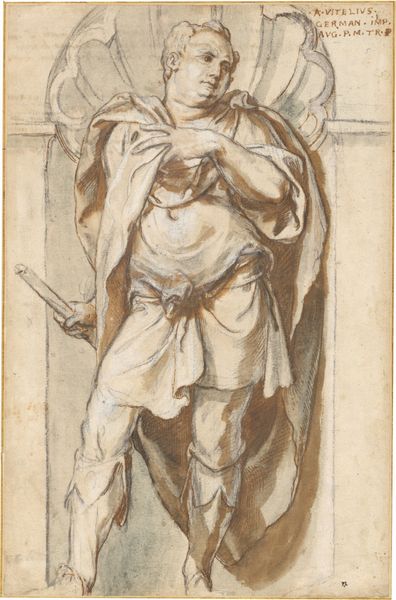
Theresias, the sage from Thebe, holding a sphere, standing in a niche 1548 - 1608
0:00
0:00
drawing, charcoal
#
portrait
#
drawing
#
charcoal drawing
#
mannerism
#
charcoal
#
charcoal
Dimensions: 235 mm (height) x 97 mm (width) (bladmaal)
Curator: This is "Theresias, the sage from Thebe, holding a sphere, standing in a niche," a drawing by Ippolito Andreasi, dating back to between 1548 and 1608. It currently resides in the SMK, the National Gallery of Denmark. Editor: It's all lines and shapes, quite beautiful actually. A contemplative air hovers around this figure. There's an almost dreamlike quality to it. Curator: The figure of Tiresias is a compelling one. As a blind prophet of Thebes in Greek mythology, he embodies a certain kind of knowledge, attained through suffering, very topical at the time the artwork was made. Editor: And that globe, or sphere—is that an intentional counterpoint to his blindness? Is it made of charcoal, like the rest of the drawing? How much pressure did Andreasi exert to obtain such variations of shade? Curator: Exactly. This choice of the globe, this orb representing universal knowledge, contrasts intriguingly with the traditional representation of Tiresias. Remember that 16th-century mannerism was preoccupied with complex allegories. Consider how a drawing would be instrumental to creating the actual paintings, tapestries or sculptures meant for an elite audience. Editor: A medium like charcoal offers so much flexibility, allowing the artist to achieve a full range of tones and textures—and also it allows for error. See how the lines are built up carefully. I am wondering what kind of paper was used for this, if that can be known? How was it prepared? The means of production shape our understanding, revealing the artist's hand in crafting the meaning itself. Curator: The act of creation itself becomes part of the story. Here, Andreasi’s decision to portray Tiresias as powerful not despite, but because of his blindness offers a powerful message about accessing inner truths and wisdom. I'd be interested to research the influence that Neoplatonism could have had in his work, because wisdom and intellectual knowledge was at the core of this philosophical revival. Editor: Fascinating. The more we observe the labor invested in this drawing the more that sense of contemplative beauty returns. It speaks of more than the myth: of process, study, labor. Curator: Precisely. And through understanding Andreasi's artistic choices and cultural context, we are able to unlock deeper layers of meaning, appreciating how this artwork challenges conventional notions of perception and insight.
Comments
No comments
Be the first to comment and join the conversation on the ultimate creative platform.
